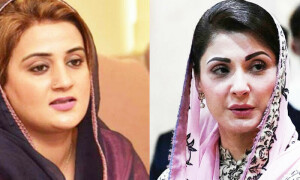A commodity exchange market, in its simplest form, acts as an intermediary between a seller (farmer) and buyer (consumer) of the commodity. However, with the growth of modern agricultural practices (and industries), the functions of a commodity exchange have increased.
Now-a-days a commodity exchange generally involves many parties who provide risk management solutions in the form of commodity derivatives to businesses. A commodity derivative product is basically an agreement to buy or sell the particular product in the future at a current specified price.
The objective of a derivative product is to protect buyers from fluctuations in the market price and to offer a fair price mechanism to sellers of the commodities.
There is a need to connect farmers in rural areas with the operations of the Pakistan Mercantile Exchange
The theoretical foundations of a commodity exchange advocates devising mechanism for farmers to minimise their losses and access the best possible market rates. With the establishment of the Chicago Mercantile Exchange in 1898, modern commodity exchanges have started offering risk management derivative products (forward and options) to investors.
A modern commodity exchange generally offers trade in three broad categories; crops, metals and energy. The crops include offering futures contracts in sugar, rice, wheat, cotton, chillies, palm oil, potato, coffee etc. The category of metals includes silver, gold, aluminium, steel, iron etc. Similarly, the category of energy includes futures contracts in oil, gas, electricity etc.
The Pakistan Mercantile Exchange (PMEX), established in 2002 under the name of National Commodity Exchange, is the sole commodity exchange working in the country offering futures contract of nine commodities. The annual turnover at the PMEX in last year was Rs710bn with more than 15pc average annual returns.
However, the original purpose of a commodity exchange — to serve the needs of farmers — is not genuinely reflected in the PMEX. There are various factors responsible for the non-participation of the farmers’ community in the operations of PMEX including financial illiteracy, lack of access to capital, absence of branch networks in rural areas etc.
There is a need to connect farmers in rural areas with the operations of the PMEX to offer them fair price mechanism and to increase their incomes.
To achieve this objective, international experiences can be studied. For example, in Kenya, the Agricultural Commodity Exchange has been established to link the small-scale farmers with the national and regional commodity markets.
It employs the use of information technology to disseminate the prices of various agricultural crops among farmers. It also serves as a clearing house and arranges logistics hereby providing best fair price to the farmers.
Similarly, in India, the working of E-Choupal is helping the farmers to access the regional market by sharing national-level price information at the village level. The E-Choupal system has enabled farmers to access the best market price through the use of information technology.
The learning from these experiences can be applied in Pakistan to link small and medium size farmers with the PMEX by using information technology to know the latest market prices and trends.
The turnover of PMEX can be significantly increased by establishing trading and clearing platforms at the district level.
Further, to encourage farmers to sell their produce through a commodity exchange, the PMEX should design financial incentives and promote its working in the rural areas where the middleman usually exploits farmers.
In addition to this, the government should help the PMEX to establish its trading centres in the agricultural areas of central Punjab, interior Sindh and KP. It should also facilitate farmers in accessing the latest price information.
The writer teaches at AIOU, Islamabad.
Published in Dawn, Business & Finance weekly, September 12th, 2016














































